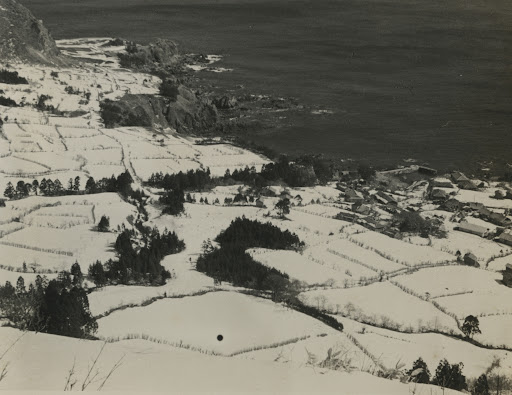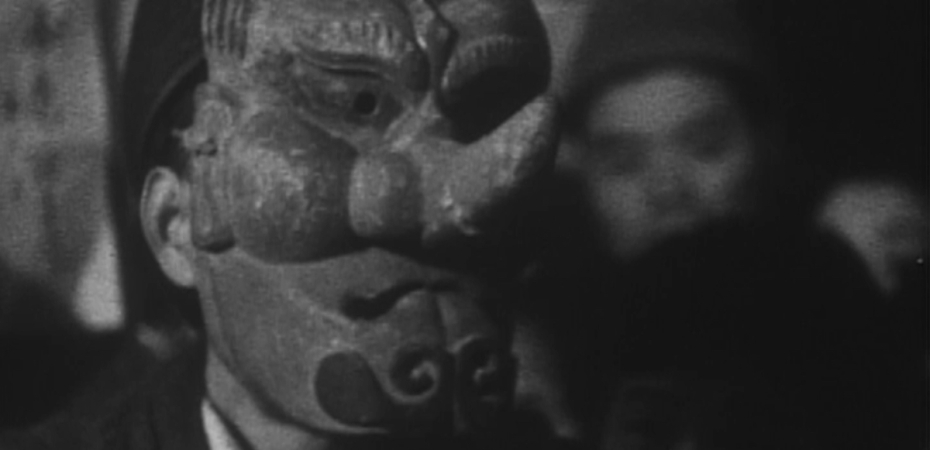As a sort of work in progress, draft for a possible future research, or simply as a trace of a significant and very rare viewing experience, I have decided to publish, unedited, the notes and reflections I took while attending the Noda Shinkichi’s retrospective, organized at the Yamagata International Documentary Film Festival, in October 2023.
A total of 38 films were screened in 5 days, here are my notes on the first two days (you can read the synopsis of each film here, notes on the third day here).
Day 1
Renovating Farm Houses (1941)
Festivals in Tohoku Part 1 (1956 )
Festivals in Tohoku Part 2 ( 1956 )
Festivals in Tohoku Part 3 (1957 )
Impressive use of colours, especially in the second film, where the parade reminded me of Rio’s carnival.
Forgotten Land: Record of Life Series II (1958)
Impressive film, especially on a formal level.
Opening: the camera pans on the faces of students, who are telling their dreams, mainly to leave the village. The use of editing reminded me of soviet montage, for example: close-up of a fisherman, fast cut to the sea and wave, or when the woman is ploughing the soil, the editing is almost in rhythm with her actions.
The soundscape has also a big part in the film: the sounds of waves penetrate each image, and each individual’s life, we are reminded that the sea is always there with its harshness
On the Method of Avant Garde Documentary by Matsumoto Toshio was published in June 1958, in Kiroku Eiga, the journal founded by Noda, Matsumoto and others.
The Girl of the Valley (1949)
Fiction with a heavy touch of realism.
Making of charcoal is a theme recurring in all his movies about or set in Tohoku, signifying an old and severe way of living,
The Locomotive Kid (1950)
The scenes about the train are beautifully filmed, I liked the transition from the kid looking at a photo of a locomotive to images of it.
The tone of the movie is definitely lighter than the previous one. Of course the train is the kid’s dream but also, as always, symbolises progress, especially for a rural area.
Slow paced.
Noda is good at directing kids. The two movies and Work in Retail (1951) reminded me of the films of Shimizu Hiroshi, the kids of course but also the tone (a mixture of serious and funny).

Day 2
The Unforgivable Atom Bomb: The Singing Voice of 1954 Japan (1954)
Impressive film that reminds us the importance of utagoe festivals, and utagoe culture more in general. As we’ll see in the next couple of movies, singing while protesting gives the people an identity, unifies them. Each union or group has a different song.
Formally the film alternates long shots, when we see the stage and groups performing on it, with images filmed close to the performers. As the movie progresses the images of the auditorium with all the people singing and moving together are used more often. Very impactful scenes.
Noda a couple of times cuts to images of strikes.
Chinese and Korean groups are also performing on stage, it is a very transnational movement, highlighting class struggle first, in this it reflects the political atmosphere of the 1950s. Women are very present and a very active part of the unions, at least it seems so from the film.
Utagoe as a convergence of popular and political is fascinating, it is popular before becoming pop (probably in the 60s)
On a side note, in the credits I’ve seen the name かんけまり Kanke Mari, she was a director of PR movies and documentaries active in the 60s and 70s (did a documentary on a railway workers strike screened at National Film Archive ), Noda writes about her in his book about documentary.
The Matsukawa Incident: Seeing the Truth Through the Wall (1954)
Opens with images of a wall, silent, and then with organ music. From here we move to the court where we are explained about the incident, the official version.
The film is constructed as a counter story of the incident and does so in a very modern way that feels very fresh even today.
Interviews with the men wrongly accused, graphs and animation used to explain the movements of the suspects, scenes that feel almost reenactments (man walking along the railway).
The film takes its time in explaining the facts and in depicting the wrongly-accused men. It is strange to say, but it feels like a crime novel, there’s even suspense.
The Workers of Keihin 1953 (1953)
Film starts with the depiction of the workers on the way to their job place, bus, train and boat.
Use of photos.
During the demos, we often see the mothers with their kids.
Preparation for May Day, all the different unions and some new ones are formed (department stores, mainly women).
U.S. bases are considered responsible for the conditions of the workers, overworking, low salaries, etc.
This sentiment against the US is added to the one against the war in Korea.
As in the utagoe film, the events organised by the unions are horizontal in their scope, here we see a sports day organised for the Korean community in Japan. We also see support in China, Italy (just mentioned), and other countries.
Important: the unions/workers are reaching to the farmers to get their support against the use of Japanese land by the American bases (this predates the documentaries about the Sunagawa riots by Kamei Fumio and of course Ogawa Pro).
The farmer resistance of the 60s does not appear suddenly from nothing.
June 1960: Rage Against the Security Treaty (1960)
Dramatic music opens the film, from the very beginning it’s very noticeable how the style has evolved: fast cutting, shaky hand camera, many shots are from street levels and in the action (Sunagawa and Sanrizuka style), close-ups, direct sound…
Powerful scene: arrival in Japan of Ike, helicopter is landing among a sea of people protesting.
Farmers are more present here in the protests, Miike mine workers are also showing solidarity.
Spectacular images of protests in front of the American embassy and the National Diet Building.
Death of Kanba Michiko, killed in the protests. After the tragedy the movie goes silent for a couple of minutes showing mainly photos of people beaten laying on the street, powerful and violent images. Photos of prime minister Nishi are often used and stay on screen for quite a long period of time.
The New Japanese Geography Film Series: Tone River (1955)
The New Japanese Geography Film Series: The Roofs of Honshu (1957 )
The New Japanese Geography Film Series: Tokaido, Yesterday and Today (1958)
The New Japanese Geography Film Series: Villages of the Northeast (1959)
What I remember of the four movies is that in one it is said that the modernisation of Japan, while obviously necessary, turns every city into something similar. The specificity is lost.
Technique of Foundry: The Cupola Operation (1954)
Experimental music used throughout. Images of melting metal are like abstract paintings, the camera stays on these images for long periods of time (considering it is a PR film).
Marine Snow: The Origin of Oil (1960)
Well, a spectacle, the colours are amazing, the editing in a scene about the waves is almost jump-cut.
Again, some images, are like abstract paintings, it’s science porn (like the rice ones in Magino).
Grandiose music. Commissioned by a oil company, thus partly celebrating the petroleum industry, and yet…
Country Life under Snow (1956)
The colour palette is tone down here, what I remember is the music being similar to the one used in Godzilla.
to be continued

[…] As a sort of work in progress, draft for a possible future research, or simply as a trace of a significant and very rare viewing experience, I have decided to publish, unedited, the notes and reflections I took while attending the Noda Shinkichi‘s retrospective, organized at the Yamagata International Documentary Film Festival, in October 2023.In total 38 films were screened in 5 days (you can read the synopsis of each film here).Below the notes I took on day 3 (my thoughts on the first two days are here): […]
LikeLike
[…] the synopsis of each film here. Below you can find the notes I took on day 4 (my notes on the first two days, and the third […]
LikeLike
[…] 38 films were screened in 5 days (you can read the synopsis of each film here).My thoughts on days 1-2, 3 and […]
LikeLike